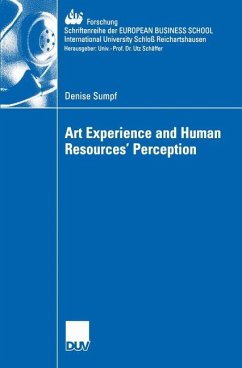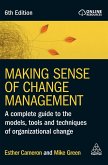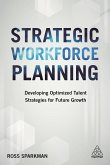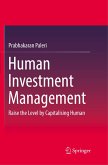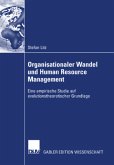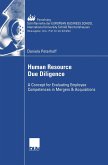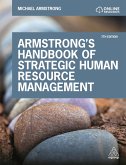Denise Sumpf analyses empirically whether art experience contributes to a reduction of perceptual biases in managerial decision-making. The results show that art experience tackles several perceptual biases, but the efficacy and the efficiency as a human resource development tool depend on several variables. For example, the quality of the intermediary, the amount and intensity of exposure to art, or the composition of the participant group are influential.
Management and art - do these two fit together? Is an investment into art "worthwhile" from a shareholder's point of view? Regardless of the answer to these questions, a number of inter national companies establish large art collections or offer related art programmes for their human resources, their clients or the general public in recent years. The size of these art col lections or the amount of funding available has in some cases reached a dimension, which from an economic point of view justifiably questions whether such a commitment or invest ment is at all advisable. This situation raises numerous more questions and problems, in par ticular concerning the direct or indirect benefits that can be expected from the arts in the cor porate environment, notwithstanding the methodological problem of measuring their success. Depending on the interests or perspectives involved, very different aspects are in the spotlight, e. g. art as a financial investment, as a public relations tool or as a tool in human resource de velopment. The author of this book concentrates primarily on the impact of art respectively art experience on human resources' general perception and their perceptual competence. In doing so she is breaking new ground in research, since until to date only very few studies have been con cemed with the questions above and with the particular subject of this doctoral thesis.
Hinweis: Dieser Artikel kann nur an eine deutsche Lieferadresse ausgeliefert werden.
Management and art - do these two fit together? Is an investment into art "worthwhile" from a shareholder's point of view? Regardless of the answer to these questions, a number of inter national companies establish large art collections or offer related art programmes for their human resources, their clients or the general public in recent years. The size of these art col lections or the amount of funding available has in some cases reached a dimension, which from an economic point of view justifiably questions whether such a commitment or invest ment is at all advisable. This situation raises numerous more questions and problems, in par ticular concerning the direct or indirect benefits that can be expected from the arts in the cor porate environment, notwithstanding the methodological problem of measuring their success. Depending on the interests or perspectives involved, very different aspects are in the spotlight, e. g. art as a financial investment, as a public relations tool or as a tool in human resource de velopment. The author of this book concentrates primarily on the impact of art respectively art experience on human resources' general perception and their perceptual competence. In doing so she is breaking new ground in research, since until to date only very few studies have been con cemed with the questions above and with the particular subject of this doctoral thesis.
Hinweis: Dieser Artikel kann nur an eine deutsche Lieferadresse ausgeliefert werden.

